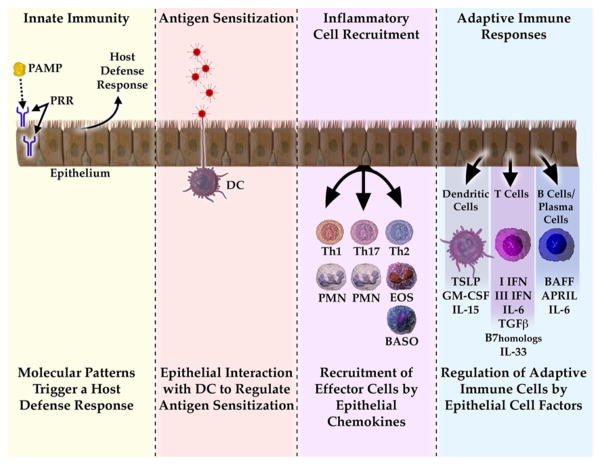FIG 1.
Model summarizing the influence of epithelial cells on innate and adaptive immune responses in the airways. Epithelial cells express pattern-recognition receptors and release antimicrobial products into the airways. They also interact with interepithelial DCs and subepithelial DCs to alter the ability of DCs to skew T cells. During inflammatory and immune responses, epithelial cells release specific chemokines that recruit subsets of granulocytes and T cells that are appropriate to the particular immune response. Finally, epithelial cells regulate the adaptive immune response by expression of soluble and cell-surface molecules that alter the function of DCs, T cells, and B cells in the airways. PAMP, Pathogen-associated molecular pattern; PRR, pathogen-recognition receptor; PMN, polymorphonuclear leukocyte; EOS, eosinophil; BASO, basophil; APRIL, a proliferation-inducing ligand.

